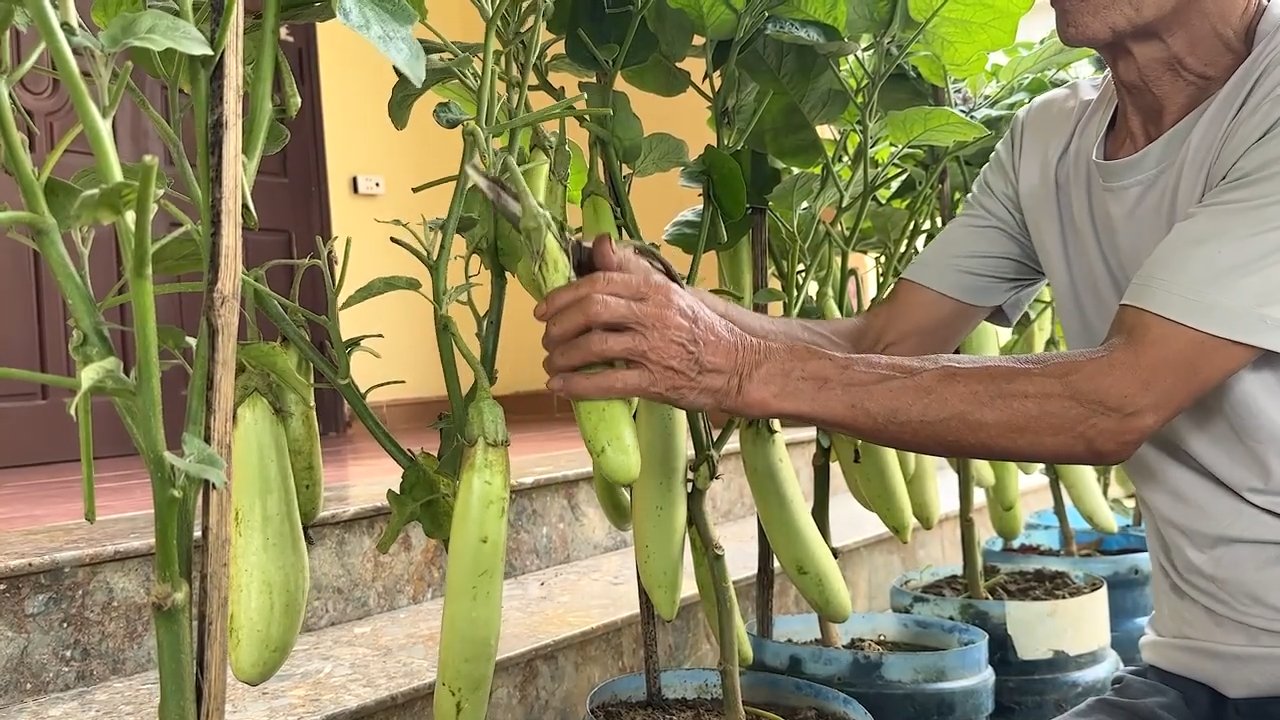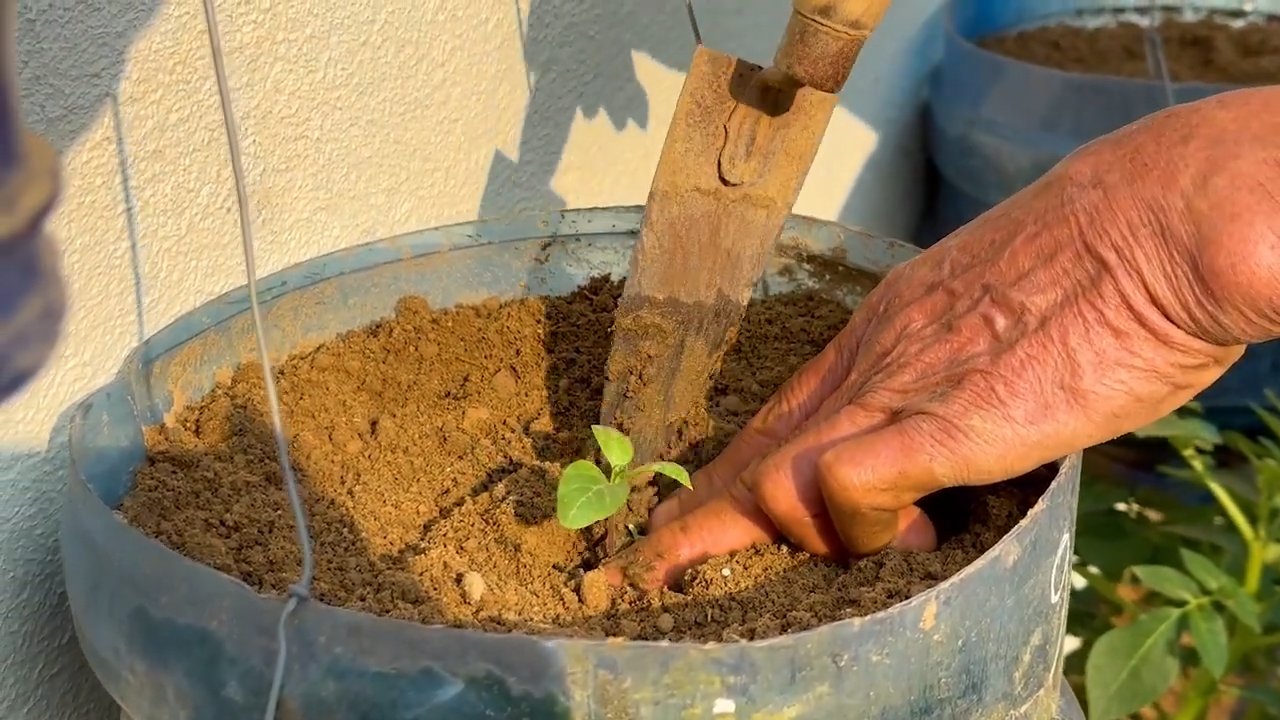Growing White Eggplants might sound like an exotic culinary adventure reserved for seasoned gardeners, but trust me, it’s a surprisingly achievable and rewarding project for anyone, even if you’re just starting out! Have you ever dreamed of strolling through your own backyard, plucking a creamy white eggplant, and whipping up a stunning dish that’s as visually appealing as it is delicious? Well, this DIY guide is your ticket to making that dream a reality.
Eggplants, in general, have a rich history, tracing back to ancient Asia where they were cultivated for centuries. While the familiar deep purple variety dominates supermarket shelves, white eggplants offer a unique twist. They’re often milder in flavor and boast a delicate texture, making them a delightful addition to various cuisines. Plus, their unusual color adds a touch of elegance to any meal.
But why should you bother with growing white eggplants yourself? Simple! Store-bought produce often lacks the freshness and flavor of homegrown vegetables. Plus, you have complete control over the growing process, ensuring your eggplants are free from harmful pesticides and chemicals. In this article, I’ll share my favorite DIY tricks and hacks to help you cultivate a thriving white eggplant patch, regardless of your gardening experience. From seed starting to pest control, I’ve got you covered. Let’s get our hands dirty and embark on this exciting gardening journey together!

Growing White Eggplants Yourself: A Comprehensive DIY Guide
Hello, garden friends! Are you in the mood to grow something truly special in your garden? Then let’s grow white eggplants together! They are not only beautiful to look at but also incredibly delicious and a great alternative to the classic purple varieties. I’ll show you how to do it – step by step and very easily.
Why White Eggplants?
Before we get started, a few words on why I’m so enthusiastic about white eggplants:
- Unique Appearance: They are simply an eye-catcher in the garden and on the plate.
- Milder Taste: Many find that white eggplants are less bitter than their purple relatives.
- Versatile Use: Whether fried, grilled, stuffed, or in curries – white eggplants are true all-rounders.
- Healthy: Like all eggplants, the white varieties are also rich in vitamins and minerals.
What You Need for Cultivation
Before we start planting, here is a list of things you should have ready:
- Eggplant seeds (white variety): Look for a high-quality variety that is suitable for your climate. I recommend varieties like ‘Casper’, ‘White Egg’, or ‘Bianca’.
- Seed starting pots or trays: For starting indoors.
- Seed starting mix: Special soil for starting young plants.
- Potting soil: Nutrient-rich soil for planting out in the bed or in pots.
- Fertilizer: Organic fertilizer or special eggplant fertilizer.
- Watering can or garden hose: For regular watering.
- Plant stakes: To support the plants, especially when they bear fruit.
- Pruning shears: For pruning and harvesting.
- (Optional) Cold frame or greenhouse: for an earlier harvest.
- (Optional) Mulch material: To protect the soil and control weeds.
Preparation: Sowing and Starting Seeds
Eggplants need some time to grow, so it’s best to start them indoors early.
- Sowing Time: Start sowing about 8-10 weeks before the last expected frost. In Germany, this is usually in February or March.
- Sowing:
- Fill the seed starting pots or trays with seed starting mix.
- Press the soil down lightly and moisten it.
- Place 1-2 seeds per pot on the soil.
- Cover the seeds with a thin layer of soil (approx. 0.5 cm).
- Gently spray the soil with water.
- Location: Place the seed starting pots in a warm and bright place. A temperature of 22-25°C is ideal for germination. A mini-greenhouse or a heating mat can help maintain the temperature.
- Moisture: Keep the soil evenly moist, but not wet. Avoid waterlogging, as this can lead to mold.
- Germination: Germination usually takes 1-2 weeks. As soon as the first seedlings appear, remove the weaker seedling per pot if you sowed two seeds.
- Care of Young Plants:
- Place the young plants in a brighter, but not too sunny, location.
- Water regularly, but not too much.
- Once the plants have 2-3 true leaves, you can transplant them into larger pots. Use potting soil for this.
Planting Out: Into the Bed or Pot
As soon as temperatures rise and there is no more danger of frost, the eggplants can be moved outdoors.
- Timing: Wait until mid-May or early June before planting the eggplants out. The soil temperature should be at least 15°C.
- Location: Choose a sunny and sheltered spot. Eggplants love warmth and light.
- Soil Preparation:
- Loosen the soil thoroughly.
- Mix in compost or well-rotted manure to enrich it with nutrients.
- Eggplants prefer a slightly acidic to neutral pH (6.0-7.0).
- Planting Distance: Maintain a planting distance of about 50-60 cm between plants and 70-80 cm between rows.
- Planting Out:
- Dig a hole that is slightly larger than the root ball of the eggplant plant.
- Carefully place the plant in the hole and fill it with soil.
- Press the soil down lightly and water the plant thoroughly.
- Staking: Place a plant stake next to each plant right after planting to support it later when it bears fruit.
- Mulching (optional): Apply a layer of mulch (e.g., straw, wood chips, or grass clippings) around the plants. This helps to retain moisture in the soil, suppress weeds, and protect the soil from temperature fluctuations.
Care: Watering, Fertilizing, Pruning
For your white eggplants to thrive, regular care is important.
Remove affected leaves and treat the plants with a fungicide if necessary.
Watering:
Eggplants need regular water, especially during flowering and fruiting.
It’s best to water in the morning or evening to avoid evaporation.
Avoid waterlogging, as this can lead to root rot.
Water directly at the roots and avoid wetting the leaves to prevent fungal diseases.
Fertilizing:
Eggplants are heavy feeders and require regular fertilization.
Start fertilizing about 2-3 weeks after planting out.
Use an organic fertilizer (e.g., compost, horn shavings) or a special eggplant fertilizer.
Fertilize every 2-3 weeks according to the instructions on the package.
Pruning:
Eggplants produce many side shoots that can interfere with fruit production.
Regularly remove the side shoots that grow between the main stem and the leaves (so-called “suckers”).
Leave 2-3 main stems where the fruits can form.
Also, remove yellow or damaged leaves.
Protection from Pests and Diseases:
Eggplants can be infested by various pests, such as aphids, potato beetles, or spider mites.
Check the plants regularly for pests and combat them with biological means if necessary (e.g., neem oil, soap solution).
Eggplants can also be affected by fungal diseases, such as powdery mildew or gray mold.
Ensure good ventilation for the plants and avoid wetting the leaves.

Conclusion
So, there you have it! Embracing the world of growing white eggplants is not just about adding a unique vegetable to your garden; it’s about unlocking a world of culinary possibilities and experiencing the sheer joy of nurturing something beautiful and delicious from seed to table. This DIY trick, focusing on [Specific DIY Trick Mentioned in Article, e.g., “companion planting with marigolds” or “creating a DIY shade cloth”], is a game-changer for anyone serious about maximizing their yield and ensuring the health of their white eggplant plants.
Why is this a must-try? Because it addresses a critical aspect of white eggplant cultivation – [State the problem the trick solves, e.g., “pest control,” “sunburn prevention,” or “soil nutrient balance”]. By implementing this simple yet effective technique, you’re not just growing eggplants; you’re creating an optimal environment for them to thrive. You’ll witness healthier plants, more abundant harvests, and, most importantly, those creamy, mild-flavored white eggplants that are so prized in the culinary world.
But don’t stop there! Experimentation is key to gardening success. Consider these variations to further enhance your white eggplant growing experience:
* Grafting: If you’re feeling adventurous, try grafting your white eggplant scions onto more vigorous rootstock for increased disease resistance and overall plant strength.
* Vertical Gardening: White eggplants can be surprisingly well-suited for vertical gardening systems, especially in smaller spaces. Use cages or trellises to support the plants and maximize sunlight exposure.
* Companion Planting Combinations: While marigolds are a great start, explore other beneficial companion plants like basil, thyme, or rosemary to deter different pests and attract pollinators.
* Different White Eggplant Varieties: Don’t limit yourself to just one type! Explore different white eggplant varieties like ‘Casper,’ ‘Bianca,’ or ‘Dourga’ to discover your personal favorite in terms of flavor, texture, and appearance.
Growing white eggplants can be a rewarding experience. We encourage you to take the plunge, try this DIY trick, and witness the difference it makes in your garden. Remember to document your journey, take photos, and share your experiences with us and the wider gardening community. Your insights could inspire others to embark on their own white eggplant adventures!
We’re confident that with a little effort and the right techniques, you’ll be harvesting a bountiful crop of delicious white eggplants in no time. Happy gardening!
Frequently Asked Questions (FAQ)
Q: What makes white eggplants different from purple eggplants?
A: White eggplants are distinct from their purple counterparts in several key aspects. Firstly, their flavor is generally milder and less bitter, making them more versatile in cooking. Secondly, their skin is thinner and more delicate, often requiring less peeling. Thirdly, some people find them aesthetically more appealing, adding a touch of elegance to dishes. Finally, some varieties of white eggplants are reported to have fewer seeds than purple varieties. However, the growing requirements are generally similar, although some gardeners find white eggplants to be slightly more susceptible to sunburn.
Q: Is growing white eggplants more difficult than growing purple eggplants?
A: Not necessarily. The fundamental principles of eggplant cultivation apply to both white and purple varieties. Both require warm temperatures, well-drained soil, and plenty of sunlight. However, white eggplants, particularly certain varieties, can be slightly more prone to sunburn due to their lighter skin. This is where the DIY trick of [Specific DIY Trick Mentioned in Article, e.g., “using shade cloth”] becomes particularly valuable. Additionally, consistent watering and fertilization are crucial for both types of eggplants. Monitoring for pests and diseases is also essential, regardless of the eggplant color.
Q: What are some common problems when growing white eggplants, and how can I prevent them?
A: Some common problems include:
* Sunburn: As mentioned earlier, white eggplants are more susceptible to sunburn. Prevent this by providing shade during the hottest part of the day, especially in regions with intense sunlight. The DIY shade cloth mentioned earlier is an excellent solution.
* Pests: Common eggplant pests include flea beetles, aphids, and eggplant borers. Implement preventative measures like companion planting with insect-repelling herbs (basil, rosemary, thyme), using row covers, and regularly inspecting plants for signs of infestation. Organic insecticides like neem oil can be used as a last resort.
* Diseases: Fungal diseases like verticillium wilt and fusarium wilt can affect eggplants. Choose disease-resistant varieties, practice crop rotation, and ensure good soil drainage to minimize the risk of these diseases.
* Blossom End Rot: This is caused by calcium deficiency and inconsistent watering. Ensure your soil is rich in calcium and maintain consistent moisture levels, especially during fruit development.
* Poor Fruit Set: This can be due to lack of pollination or extreme temperatures. Attract pollinators by planting flowering herbs and vegetables nearby. Hand-pollinate if necessary, especially in enclosed spaces.
Q: How often should I water my white eggplant plants?
A: Water deeply and regularly, especially during hot and dry periods. Aim for about 1-2 inches of water per week. Check the soil moisture regularly; it should be consistently moist but not waterlogged. Water at the base of the plant to avoid wetting the foliage, which can encourage fungal diseases. Mulching around the plants can help retain moisture and suppress weeds.
Q: What kind of fertilizer should I use for white eggplants?
A: White eggplants are heavy feeders and benefit from regular fertilization. Use a balanced fertilizer (e.g., 10-10-10) at planting time and then side-dress with a nitrogen-rich fertilizer every few weeks during the growing season. You can also use organic fertilizers like compost tea or fish emulsion. Avoid over-fertilizing, as this can lead to excessive foliage growth at the expense of fruit production.
Q: When is the best time to harvest white eggplants?
A: Harvest white eggplants when they are young and the skin is still smooth and glossy. The size will vary depending on the variety, but generally, they are ready to harvest when they are about two-thirds of their mature size. Gently press the skin; if it feels firm but slightly yielding, it’s ready to pick. Use a sharp knife or pruning shears to cut the eggplant from the plant, leaving a small stem attached. Overripe eggplants will become bitter and seedy.
Q: Can I grow white eggplants in containers?
A: Yes, white eggplants can be successfully grown in containers, provided you choose a large enough pot (at least 5 gallons) and use a well-draining potting mix. Ensure the container receives at least 6-8 hours of sunlight per day. Water and fertilize regularly, as container-grown plants tend to dry out and deplete nutrients more quickly than those grown in the ground. Consider using a stake or cage to support the plant as it grows.
Q: What are some delicious ways to cook with white eggplants?
A: White eggplants are incredibly versatile in the kitchen. Their mild flavor makes them a great addition to stir-fries, curries, and stews. They can also be grilled, roasted, or fried. Try using them in eggplant parmesan, baba ghanoush, or ratatouille. Their delicate flavor pairs well with herbs like basil, oregano, and thyme, as well as spices like cumin, coriander, and turmeric. Because of their thinner skin, they often don’t require peeling, saving you time in the kitchen.
Q: Where can I find seeds or seedlings for white eggplant varieties?
A: White eggplant seeds and seedlings are available from many online seed retailers, garden centers, and nurseries. Look for reputable suppliers that offer a wide selection of varieties and guarantee seed quality. Check local nurseries for seedlings, as they are often better adapted to your specific climate. When selecting seeds or seedlings, consider factors like disease resistance, fruit size, and maturity time.




Leave a Comment